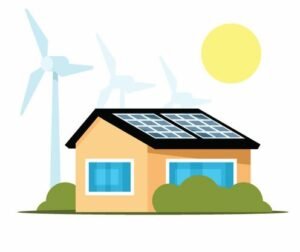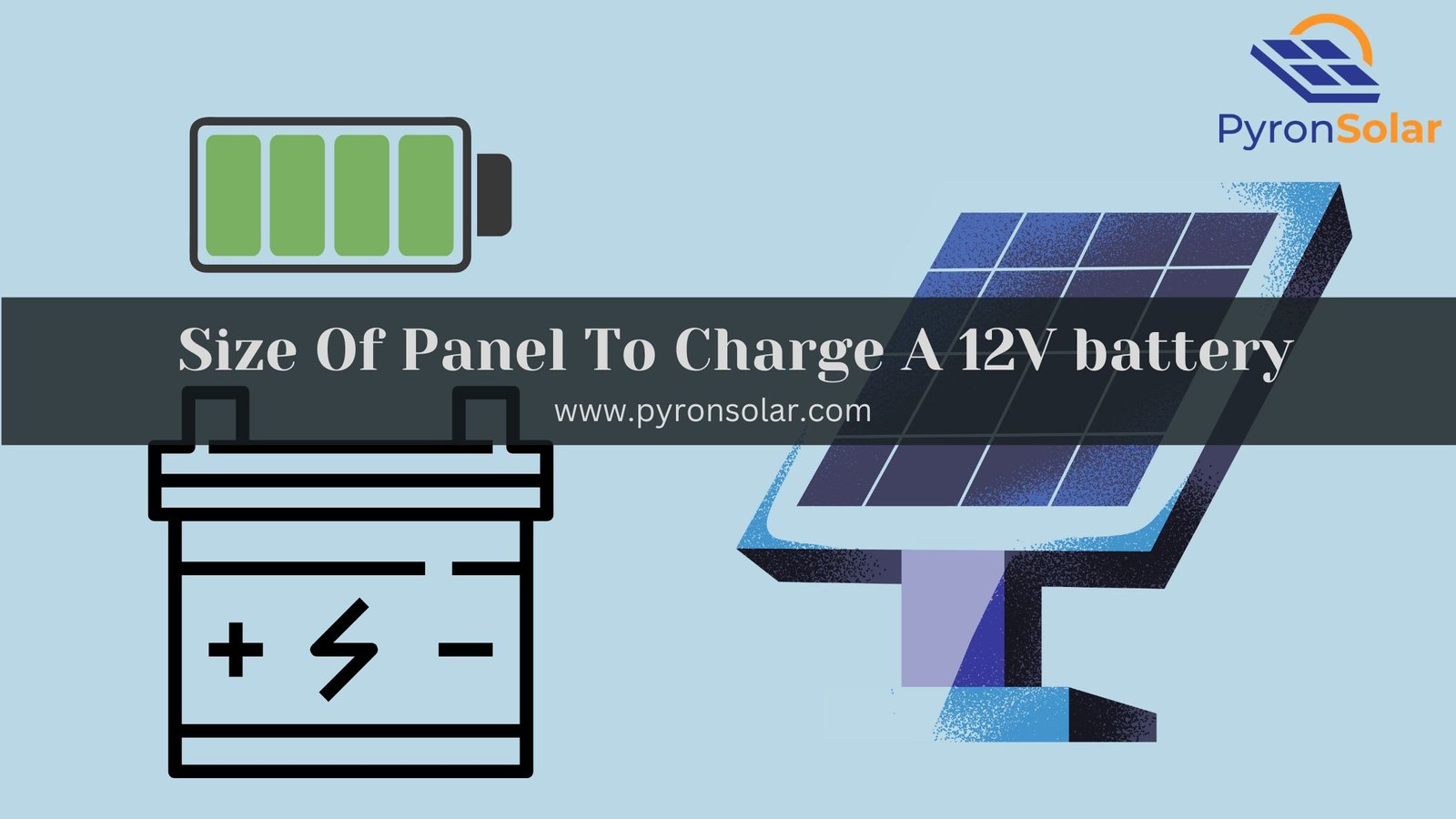My house is settled in a region that lacks electricity which is the prime reason for my turning toward a better source of energy that can provide me with electricity all around the clock and save me from hefty electricity bills. Therefore I installed off-grid solar panels on the rooftop of my cottage. Panels supplied my power as long as absorption of sunlight as possible.
By using a solar panel to charge 12v battery, you can avoid relying on fossil fuels and reduce your dependence on the grid, which can be especially useful during power outages or emergencies.
Panels only delivered sufficient power for working of appliances in daylight but could not power devices at night as the system gets off at night. And then, after exploring the solution, I came across the option of setting up batteries along with panels to the off-grid system for extra power storage. The fact is that panels and batteries have a reciprocal relationship and are ineffective without each other.
Here arrives a crucial question- What panel size is required to charge a battery? In this article, I have considered a 12V inverter as an example. As you dive in through the article I will be able to answer all your queries and help you set up a solar panel system to charge a 12V battery.
Reasons For Choosing Solar Energy To Power Batteries

Using solar panels permits earning eco-friendly and pocket-friendly power, thereby reducing the load on a household. There is no damage to the environment leading to a sustainable and green habitat.
An additional benefit here is solar energy furnishes deduction of load on the main grid system. Solar panels have been lighting up my house for a while.
Deep Cycle Batteries
There are better choices than using regular batteries for a panel, as these batteries provide short bursts of power to start an appliance. Deep-cycle batteries are developed to generate a steady supply of power. These batteries are used as a storage bank to supply power to connect devices such as lights, television, refrigerator, A.C., etc. What makes deep-cycle batteries stand out is- their ability to withstand far more cycles of charging and discharging.
Generally, Two types of Deep cycle batteries are found- Flooded cells of lead acid have an efficiency of around 70%-85%, while sealed lead acid batteries have 80%-90%. Choosing a high-quality deep-cycle solar battery is important for storing solar electricity and fulfilling power needs.
Size of Solar Panel To Charge 12V Battery:-
Aspects To Be Analyzed While Choosing The Size Of The Panel
In demand, panels are available in four sizes:
36-cell,
60-cell,
72-cell, and
96-cell.
Commonly 60-cell and 72-cell panels are followed for usage in households.
Regardless of my considerations, many other factors also contribute to deciding on a reasonable panel. I have listed down all the factors that need to be considered. Let’s go through the aspects one by one.
1. Voltage
Voltage is the difference in electric potential between two points that allows the conduction of electric current through the wire.
For charging a 12V battery entirely, a panel that can yield around 12.6V to 13.6V should be considered.
2. Wattage
The rate at which energy is dissipated is known as watt/wattage. The higher the wattage rating of the panel the more the charging speed.
Let me clear my point with an example-
A 50W panel recharges a 12V battery in 8 hours whereas a 20W panel will take almost 15 hours to accomplish the same.
A point to remember here is to charge the battery appropriately, or permanent damage can occur.
An ideal 36-cell panel with high efficiency will deliver 180W. For larger batteries larger sizes of panels are suitable.
3. Amp Hours
Amp-hours is a prime factor that should be involved in shopping for a reasonable battery for panels for variable sizes. Amp hours refers to the amount of ampere a battery can offer in one hour. A 12V battery with 100Ah can deliver 100 amperes of current in one hour.
To charge a 12V 100Ah lead acid battery, a 220W solar panel with an MPPT charge controller and 5 hours of sun rays. Whereas to charge a 12V 100Ah with a PWM charge controller, a 270W panel is required.
Steps For Charging A 12V Battery With A Panel
Charging a 12V battery straight from panels is not practicable due to the lack of compatible ports and outlets in solar panels. Therefore settling down a direct connection is a dangerous and unapproachable option. Furthermore, A risk of overcharging and outbreaks follows direct contact due to variability in the sun’s energy.
A key to this lock is- Solar Charge Controller, a gadget that acts as a safety controller and automatically cuts off the power pool as soon as the battery is ultimately charged.
Charge controllers are devices that convert Voltage from solar panels into more reasonable Voltage for the battery. Now Let’s jump straightforwardly toward the steps for charging a 12V battery.
- Buying a suitable charge controller is the first and most crucial step. While purchasing you will come across two types of controllers- MPPT (Maximum PowerPoint Tracker) and PWM ( Pulse Width Modulation). The former is more efficient and yields 30% extra energy to store but is expensive.
- The next step is Installing a Charge controller. Setting up of the controller should be done in a dry, safe, and nonmetallic place to avoid damage due to weather. Direct contact with the ground is preferred.
- The 12V battery should be equipped with wires. Further, connect the wires with a charge controller and secure the connection. Now connect the controller to the panel.
- Once all connections are secured, switch on the power system and panel.
When everything is ready, set the battery for charging. The Charge controller updates the charge time by dropping voltage output and stables to zero when fully charged.
Frequently Asked Questions:-
- What are Deep cycle batteries?
Batteries used as power reservoirs for connecting several appliances are specially developed to rapidly regulate the charging and discharging of solar power.
- How long do panels take to charge a 12V battery?
Charging a fully drained battery requires at least 5 – 8 hours. But again, many other factors also affect the charging capacity, including the sun.
- Is there any alternative to solar power battery systems?
Solar power generators are devices that are easy to handle and convenient. An extra benefit of generators is that all parts, such as a battery and charge controllers required, are included, and you don’t need to buy each part separately.
- What are the uses of Deep cycle batteries?
Solar batteries for off-grid energy storage systems. Vehicles include RVs, wheelchairs, Marine trolling devices, Navigation devices, etc.
Final Words
Sometimes it creates confusion about whether charging the battery is okay or switching to solar generators.
But an important fact needed to be considered here is the suitable size/number of the panel that charges a 12V battery properly because the size and number of panels may vary according to the place, weather where you live, and the battery you use.
I have mentioned all the easy steps, so before getting confused in all these methods, try to figure out the type of power source before installing.
But yes, you can switch to battery charging options easily using the above steps. I prefer to install On-Grid solar panels or save my money to buy a Generator which will be more convenient for me, and I hope it will work for you as well.
Ray is an avid reader and writer with over 25 years of experience serving various domestic and multinational private and public energy companies in the USA.


